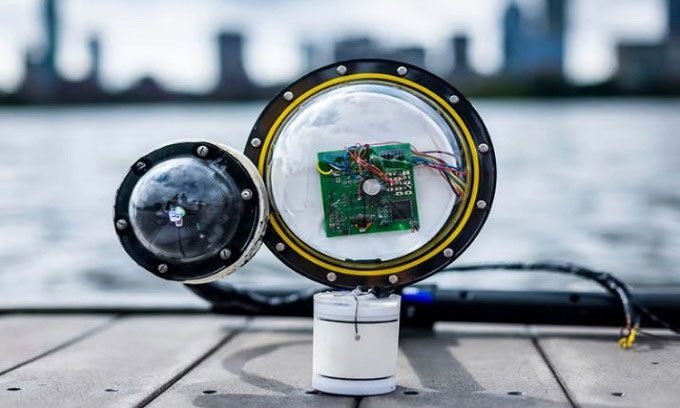Researchers at the Massachusetts Institute of Technology (MIT) have developed a new type of camera that operates without batteries and transmits images wirelessly through water.
Instead of using batteries or long electric coils, the MIT camera prototype integrates numerous transducers mounted on its exterior. When sound waves from sources such as underwater animals or vehicles reach a transducer, the pressure created by those waves causes a special material inside the transducer to vibrate. Due to the piezoelectric properties of the material, it generates an electric current in response to the vibrations. The energy produced in this way is stored in a supercapacitor used for capturing images.

MIT’s underwater wireless image transmission camera design. (Photo: MIT).
To minimize the energy requirements for capturing images, the researchers utilized ultra-low-power imaging sensors. However, these sensors can only capture grayscale images. To overcome this limitation, each image consists of three separate exposure layers, using red, green, and blue LED lights in succession. Although each layer appears monochrome, it represents how an object reflects light at the red, green, or blue wavelengths. As a result, when all three images are analyzed and combined, they can form a composite color image.
To receive the digitally encoded wireless image in binary format, a transceiver device at the surface transmits sound waves through the water to the camera. The module within the camera responds by either reflecting the signal back to the transceiver (representing a 1) or absorbing the signal (representing a 0). Thus, by monitoring which signals are returned to the transceiver and which are not, a computer can record a pattern of 1s and 0s representing the image.
So far, the technology has a maximum underwater range of 40 meters and has been successfully used for tasks such as documenting the growth of plants over more than a week. The research team at MIT hopes to extend the operational range and memory of the camera to the point where it can transmit images in real-time, even capturing moving video. They published their research findings on September 26 in the journal Nature Communications.




















































